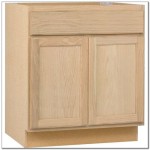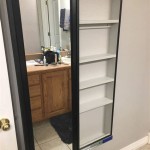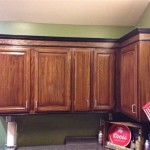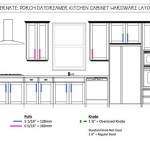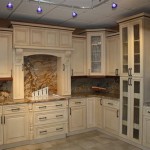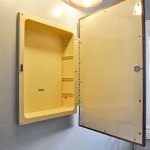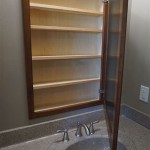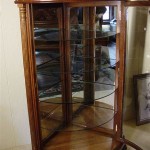Transform Your Kitchen With New Cabinets
Kitchen cabinets are a foundational element of kitchen design, significantly influencing both the aesthetics and functionality of the space. Replacing or upgrading kitchen cabinets represents a substantial investment that can yield considerable returns in terms of home value, storage efficiency, and overall enjoyment of the kitchen environment. Carefully considering the options available and planning the project meticulously is crucial for achieving a successful and satisfying kitchen transformation.
The decision to install new kitchen cabinets often stems from a variety of factors. Homeowners might seek to address outdated styles, improve storage capacity, or repair damage caused by wear and tear, water leaks, or other unforeseen events. Whatever the motivation, understanding the different cabinet types, materials, and design considerations is essential for making informed choices aligned with individual needs and preferences.
Understanding Cabinet Types
Kitchen cabinets are broadly categorized into three main types: stock, semi-custom, and custom. Each category presents a different balance of cost, customization options, and lead times. Selecting the appropriate cabinet type is a preliminary step in the kitchen renovation process.
Stock cabinets are pre-manufactured in standard sizes and styles. These cabinets are the most affordable option and are readily available at most home improvement stores. The limited range of sizes and styles, however, restricts design flexibility. Stock cabinets are suitable for homeowners seeking a budget-friendly solution with a quick turnaround time, but they may require compromises in terms of specific design preferences or optimal space utilization.
Semi-custom cabinets offer a wider range of sizes, styles, and finishes compared to stock cabinets. These cabinets allow for some modifications to standard dimensions and designs, providing a degree of personalization without the higher cost and longer lead times associated with fully custom cabinetry. Semi-custom cabinets represent a middle ground for homeowners who desire more design flexibility than stock options offer, but without the extensive customization and investment of custom cabinets.
Custom cabinets are built to order according to the homeowner's precise specifications. This option provides unparalleled design flexibility, allowing for the creation of unique cabinet configurations, materials, and finishes. Custom cabinets are ideal for kitchens with unusual layouts, specific storage needs, or homeowners with highly defined aesthetic visions. The higher cost and extended lead times are offset by the ability to create a truly bespoke kitchen environment.
Exploring Cabinet Materials and Finishes
The choice of cabinet materials significantly impacts the durability, appearance, and price of the cabinets. Common materials include wood, plywood, particleboard, MDF (Medium-Density Fiberboard), and metal. Each material offers different advantages and disadvantages in terms of moisture resistance, strength, and aesthetic appeal.
Wood remains a popular choice for kitchen cabinets due to its natural beauty, versatility, and strength. Different wood species, such as maple, oak, cherry, and walnut, offer distinct grain patterns and color variations. Hardwoods are generally more durable and resistant to scratches and dents compared to softwoods, but they also tend to be more expensive. Solid wood cabinets are prized for their timeless appeal and longevity, but they are also susceptible to expansion and contraction with changes in humidity.
Plywood is an engineered wood product made by layering thin sheets of wood veneer together. It is more stable and less prone to warping than solid wood, making it a good choice for cabinet boxes and shelves. High-quality plywood cabinets offer excellent durability and moisture resistance, providing a cost-effective alternative to solid wood construction.
Particleboard is another engineered wood product made from wood chips and resin. It is less expensive than plywood and solid wood, but it is also less durable and more susceptible to water damage. Particleboard is often used for cabinet boxes in lower-priced cabinets, but it should be avoided in areas prone to moisture exposure.
MDF is a composite material made from wood fibers and resin. It provides a smooth, uniform surface that is ideal for painting or applying veneers. MDF is more stable than solid wood and less prone to warping or cracking, making it a good choice for painted cabinet doors and drawer fronts. However, MDF is also susceptible to water damage and should be sealed properly to prevent swelling or deterioration.
Metal cabinets, often made of stainless steel, offer a sleek, modern aesthetic and are highly durable and resistant to moisture and heat. Metal cabinets are commonly found in commercial kitchens, but they are also gaining popularity in residential settings for their contemporary look and ease of cleaning. However, metal cabinets can be more expensive than wood or engineered wood options, and they may require specialized installation techniques.
Cabinet finishes play a crucial role in determining the overall appearance and durability of the cabinets. Common finishes include paint, stain, lacquer, and thermofoil. Paint provides a solid color finish that can be customized to match any design scheme. Stain enhances the natural grain of the wood and adds depth and warmth. Lacquer is a durable, glossy finish that is resistant to scratches and stains. Thermofoil is a vinyl coating that is heat-sealed to MDF, providing a smooth, seamless finish that is easy to clean.
Key Design Considerations for New Kitchen Cabinets
Beyond material and finish selection, several key design considerations can significantly impact the functionality and aesthetics of the kitchen. These include cabinet layout, storage solutions, and hardware choices. A well-designed kitchen layout optimizes workflow and maximizes storage space, while thoughtful hardware selections can enhance both the appearance and functionality of the cabinets.
Cabinet layout should be carefully planned to ensure efficient workflow and easy access to frequently used items. The classic kitchen work triangle, which connects the sink, refrigerator, and cooktop, remains a relevant guideline for optimizing kitchen layout. Consider the placement of appliances, countertops, and storage areas to create a comfortable and functional workspace. Optimize the layout to accommodate individual cooking habits and preferences. For example, frequent bakers might benefit from a dedicated baking zone with ample countertop space and specialized storage for baking supplies.
Storage solutions are essential for maximizing the functionality of kitchen cabinets. A variety of storage accessories, such as pull-out shelves, drawer dividers, and lazy Susans, can significantly improve organization and accessibility. Consider incorporating specialized storage solutions for specific items, such as spice racks, utensil organizers, and pot and pan dividers. Maximizing vertical space with tall cabinets and utilizing corner spaces with innovative storage solutions can further enhance storage capacity. Additionally, incorporating features like soft-close hinges and drawer slides contribute to a more enjoyable user experience.
Hardware choices, including knobs, pulls, and hinges, can significantly impact the overall aesthetic of the kitchen. The style and finish of the hardware should complement the cabinet style and the overall design scheme. Consider the size and shape of the hardware to ensure comfortable grip and ease of use. Modern kitchens often feature sleek, minimalist hardware, while traditional kitchens may incorporate more ornate or decorative hardware. The finish of the hardware should coordinate with other metal fixtures in the kitchen, such as faucets and lighting fixtures. Choosing high-quality hardware will ensure durability and longevity, contributing to the overall value of the kitchen renovation.
Beyond these considerations, homeowners should also address lighting, ventilation, and countertop selection in conjunction with cabinet replacement. Proper lighting ensures adequate visibility for food preparation and enhances the overall ambiance of the kitchen. Adequate ventilation, through a range hood or exhaust fan, removes cooking odors and moisture, preventing damage to cabinets and other surfaces. The countertop material and color should complement the cabinet style and the overall design scheme. These elements work together to create a cohesive and functional kitchen environment.
Successfully transforming a kitchen with new cabinets requires careful planning, thoughtful design choices, and attention to detail. By understanding the different cabinet types, materials, finishes, and design considerations, homeowners can create a kitchen that is both beautiful and functional, adding value to their home and enhancing their daily lives.

How Cabinet Refacing Can Transform Your Kitchen Severna Park

Remodeling Tips How To Transform Your Kitchen With A Cabinet Makeover Metke Luxury Homes

How Cabinet Refacing Can Transform Your Kitchen Tune Up

Transform Your Kitchen With Rta Cabinets The Ultimate Guide Wood

Creative Kitchen Remodel And Storage Tips 1 800 Pack Rat

How To Transform Your Kitchen With Custom Cabinets The And Bath Consultants

Kitchen Redesign Ideas To Transform Your Space

Seamless Style Blending Custom Cabinets With Your Existing Decor Impressions Kitchens

Kitchen Diy Shaker Style Cabinets The Crafty Blog Stalker

Kitchen Makeover Repainting Your Cabinets With A Professional Touch Painters Springfield Ma
Related Posts

